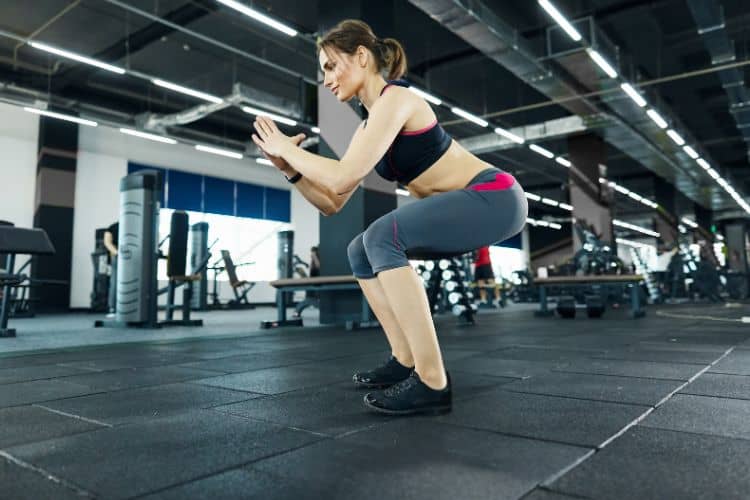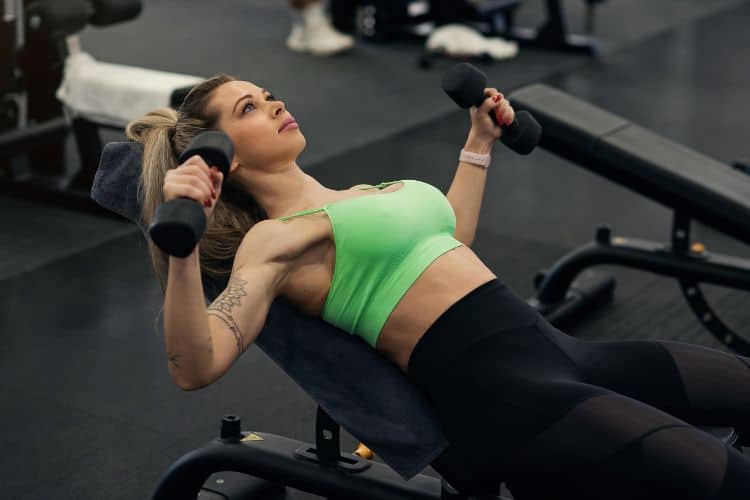Sign up for workout ideas, training advice, reviews of the latest gear and more.






The Incline Dumbbell Press is one of the most effective upper body exercises for building strength, muscle mass, and definition in the chest, shoulders, and triceps. By pressing at an incline, you target the upper portion of your chest more directly than the traditional flat bench press. Whether you train at home or in the gym, incorporating the incline dumbbell press into your workout routine can significantly enhance your upper body development.
In this guide, we’ll break down how to perform the incline dumbbell press with perfect form, its muscle-building benefits, variations to try, common mistakes to avoid, and how to program it into your workouts for maximum results.
The incline dumbbell press is a compound strength training exercise that involves pressing dumbbells upward while lying on a bench set at an incline, typically between 30–45 degrees. Unlike the flat bench press, the incline position shifts the emphasis from the mid-chest to the upper pectorals and the front deltoids (shoulders).
Because you’re working with dumbbells instead of a barbell, this movement also allows for a greater range of motion and better muscle activation, especially in the stabilizing muscles of the chest, shoulders, and arms.
Many lifters struggle to develop the upper portion of their chest, leading to an uneven look. The incline dumbbell press specifically targets this area, helping you build a fuller, more balanced chest.
The incline position places greater emphasis on the anterior deltoids, making this exercise excellent for building shoulder strength and stability.
Dumbbells allow you to lower the weights further than a barbell, providing a deeper stretch in the chest muscles and promoting better muscle growth.
Because each arm works independently, the incline dumbbell press helps correct muscle imbalances and improves coordination, which translates to better overall upper body function.
The neutral grip option with dumbbells is gentler on the wrists and shoulders compared to a fixed barbell grip, making it a safer option for many lifters.
The incline dumbbell press is primarily a push movement that engages multiple upper body muscle groups:
Step-by-Step Instructions:
Instead of palms facing forward, keep them facing each other for less shoulder strain and more triceps engagement.
Pressing one dumbbell at a time increases core activation and helps correct muscle imbalances.
Lower the dumbbells slowly (3–4 seconds) before pressing up to improve time under tension for better hypertrophy.
Adding resistance bands increases tension at the top of the movement, challenging your muscles in a new way.
Here’s a push-focused workout you can try at the gym:
Warm-Up (5–10 min)
Main Workout
Finisher
The incline dumbbell press is a staple for anyone looking to build a powerful, well-developed upper body. Its ability to target the upper chest and shoulders, improve stability, and allow for a greater range of motion makes it superior to many pressing variations.
When performed with proper form and programmed strategically, this exercise will not only help you build muscle but also enhance functional strength for everyday activities. Whether you’re a beginner or an experienced lifter, make the incline dumbbell press a regular part of your upper body workout routine to see lasting results.
Want more workout and video guide?
Follow us on Pinterest, Facebook, and Subscribe to our Newsletter and Stay tuned for FREE downloads of our App coming soon!
Stay up to date on the latest women’s health, fitness and lifestyle trends and tips.